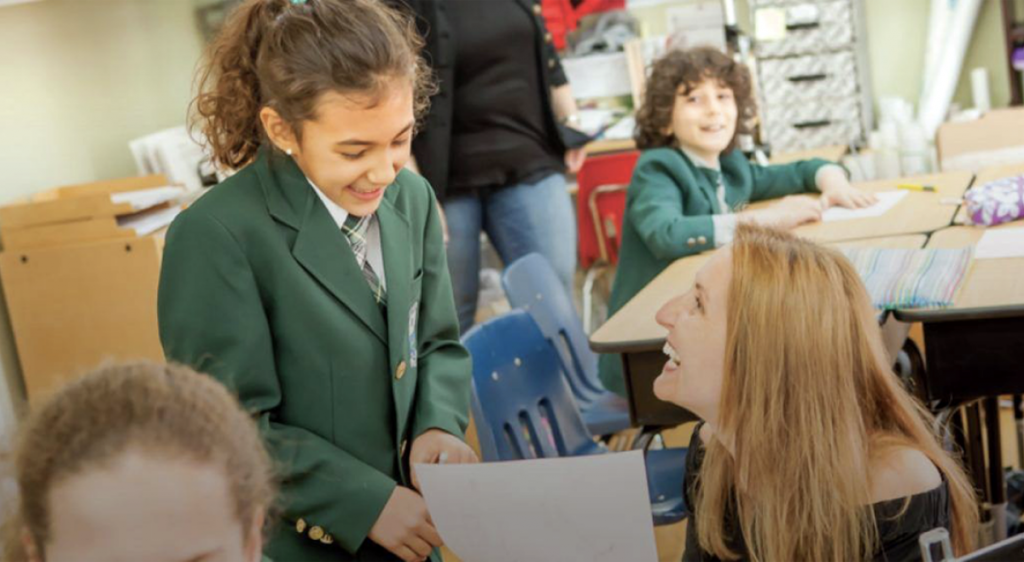
Passage to Abstraction – The children at the Elementary level work with materials that they can manipulate as they continue to learn through exploration and discovery. The materials visually represent abstract concepts such as mathematical operations, geographical facts and sentence analysis and make the abstract real. However, our aim is to lead the students to working on these concepts with pen and paper alone. The child will work with the concrete materials until they internalize the abstraction and fully understand the concept without being dependent on the materials any longer.
The purpose of having three age groups in the Montessori environment is two-fold. First, over the three year span, the teacher is able to grow to know their students’ personalities and learning styles, and as a result will be able to better meet their needs. Furthermore, the students’ learning experience will have continuity and comfort that a child feels when remaining with, ideally the same teacher for the three or four year span.
Secondly, with multi-aged groupings the older children role model and motivate the younger children. They act as “teachers” helping the younger children with interesting material they have already covered. This will build feelings of self confidence and leadership skills for the older children, and inspire the younger children to learn.
Montessori classrooms are not teacher-directed type of environments. The teacher does control the class through classroom management; however, her role is to guide the children to make their own discoveries about concepts and rules. The Montessori teacher presents lessons to the children with enthusiasm, and creates follow-up exercises that the children will be interested in completing. She teaches individual and group lessons to the children, checks work, helps children who are struggling with a concept, and leads class meetings. Above all, the teacher is patient, understanding, respectful, enthusiastic and inspirational.
Similar to their Casa experience, the Elementary children are able to choose work that they have been shown. The children are given lessons on a daily basis and are made aware that certain work must be completed within a time limit. Thus, there is a certain amount of control over what the children work on and accomplish in the classroom. However, it is the child’s responsibility to create an agenda for their week and day that will allow them to complete their work and hand it in on time. This allows the child to independently, decide how long they will spend on an assignment that day and what they would like to work on first and last. Again, this fosters independence and decision-making skills. As well, children will explore topics that interest them, will research them and will present them to the class. These are individually-tailored assignments that the teacher does not necessarily choose, but does approve of.
Although children are free to choose what they would like to work on and for what length of time they would like to work on it, they are made aware that with freedom there must be responsibility. What this means is that a child may not spend an entire morning working on a geography lesson. As interested as the child may be in this topic, he knows that he has other assignments to complete. If the child is not working freely with responsibility, then the teacher must guide his actions and ensure he is working in all areas of the classroom.


